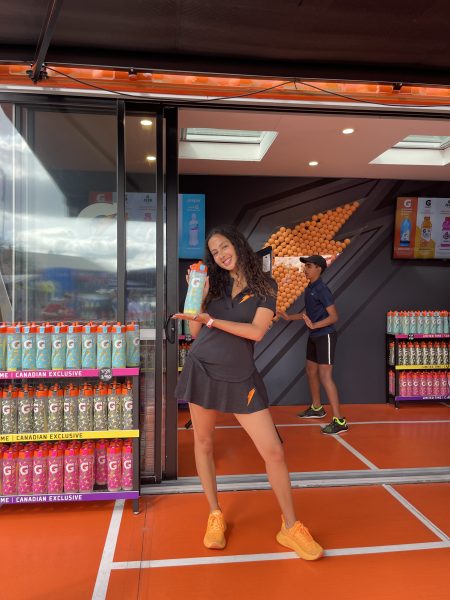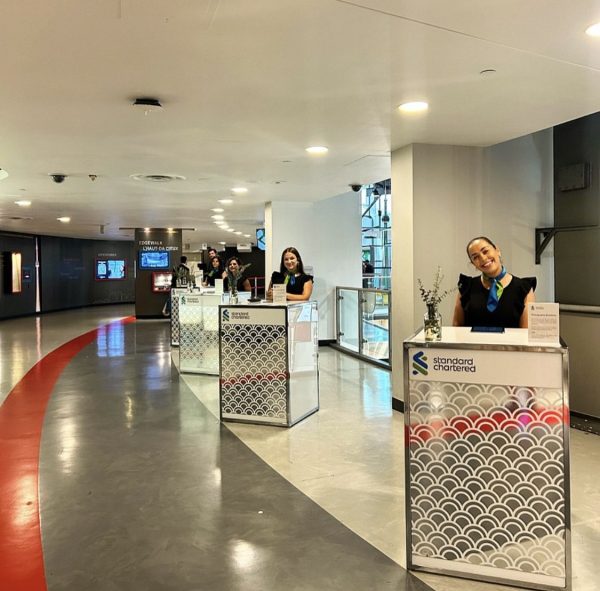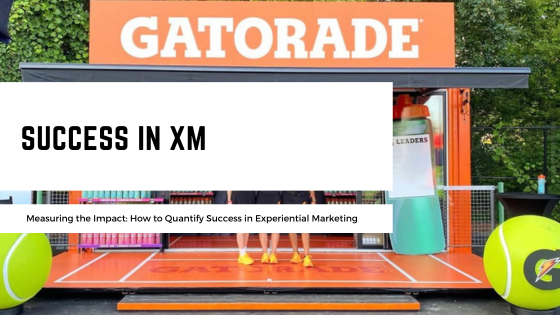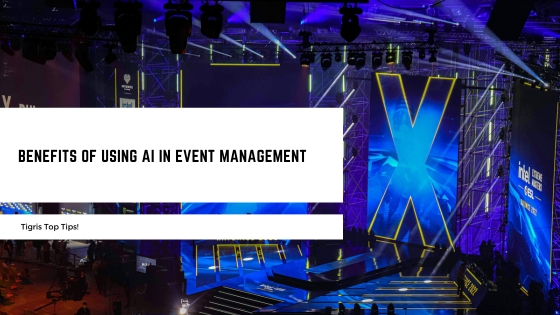Measuring the Impact: How to Quantify Success in Experiential Marketing

Beyond Logos: The Importance of Experiences in Branding
October 17, 2023
Influencer Marketing Trends: What to Watch for in the Coming Year
November 8, 2023In the dynamic world of experiential marketing, measuring success can be a challenge. The plethora of key performance indicators (KPIs) available may leave you wondering which ones are the most essential for your campaign’s objectives. Whether you’re seeking to connect with event attendees, boost conversion rates, or increase brand mentions, quantifying success in experiential marketing is critical. That’s why today we’ll explore three core metrics you should consider when measuring the success of your experiential marketing campaign: awareness, value exchange, and acquisitions!

Awareness
Awareness is the foundation upon which success in experiential marketing is built. It encompasses the general impressions of your experiential marketing campaign, event, or stunt. To measure this aspect, consider the following factors: social media buzz, impact, brand awareness and interest. Experiential marketing offers a tremendous opportunity to generate a buzz on social media. The power of your event to scale and its potential to go viral can significantly influence its success. By analyzing brand mentions, shares, and likes, you can gauge the reach and impact of your campaign, connecting with new audiences not just locally but globally.
A successful experiential marketing campaign should not only pique interest but also establish or reinforce brand awareness. It’s a chance to make a name for yourself, which is particularly vital for new brands or those undergoing a rebranding effort. Measuring brand recall and recognition among attendees is key to understanding your campaign’s effectiveness. Moreover, one of the primary goals of experiential marketing is to generate interest in your brand or product. The success of your campaign can be gauged by the number of people genuinely interested in what you offer. This metric goes beyond surface-level awareness and looks at the depth of engagement your campaign has generated.

Value Exchange
Value exchange is a vital metric in quantifying the success of your experiential marketing campaign. It involves the interactions and engagements that occur during and/or after your event. Here’s how to measure it: engagements, lead generation and active interest. Engagements can take place in person at the event or in the digital realm on various social media platforms. The more people who actively engage with your campaign, the more successful it is considered. Engagement metrics include likes, comments, shares, and the number of attendees who participate in hands-on experiences at your event, etc.
Lead generation is a direct consequence of value exchange. The number of potential customers you acquire through your experiential marketing campaign is a strong indicator of success. These leads represent individuals genuinely interested in your brand or product. Furthermore, a successful campaign will not only garner attention but also foster active interest. This means that people are not just aware of your brand; they are eager to learn more and engage further. Measuring the depth of active interest is essential to understand the true impact of your campaign.

Acquisition
Acquisition is the ultimate measure of success in experiential marketing. It signifies the conversion of attendees into loyal customers. The following are essential in measuring this aspect: consumer conversion and brand engagements. The success of your experiential marketing campaign can be directly tied to the number of attendees who actively purchase your product, sign up for your services, or complete the desired call to action. Conversion rates provide concrete evidence of the campaign’s impact on your bottom line. Acquisition goes beyond the initial purchase, it includes the continued engagement of customers with your brand post-campaign. Successful campaigns create not only new but also loyal customers who stay engaged and continue to advocate for your brand.

Final Thoughts
In conclusion, when evaluating the success of your experiential marketing campaign, it’s crucial to focus on the three-core metrics we’ve outlined today: awareness, value exchange, and acquisitions. By assessing the impact on brand awareness, the depth of engagement, and the number of converted customers, you can gain valuable insights into your campaign’s effectiveness.
As a bonus, consider the physical time spent at your event, booth, or interactive stations as an additional metric. Technology can help you track this data, providing further insights into the success of your experiential marketing efforts. With a thorough understanding of these metrics, you can fine-tune your strategies and ensure your experiential marketing campaigns deliver a positive experience for your target audience while achieving your desired objectives. Success in experiential marketing is not just a buzzword; it’s a quantifiable reality that can drive your brand to new heights. So, connect with Tigris Events today to speak with a representative who can help bring our expertise to your next campaign today – you can even find us on Instagram!




